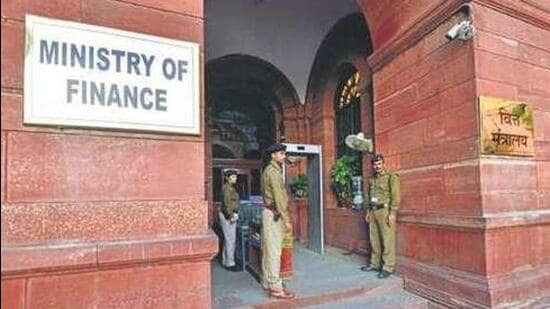NEW DELHI: The government on Friday refuted the International Monetary Fund’s (IMF) latest report that India’s government debt would exceed 100% of gross domestic product (GDP) in the medium term as factually wrong.

“In the light of the International Monetary Fund’s latest Article IV consultations with India, certain presumptions have been made taking into account possible scenarios that does not reflect factual position,” Union finance ministry said in a statement issued on Friday late night.
The statement, titled, “Factual position vis-à-vis IMF’s Article IV consultations with India”, said it is important to note that general government debt in India — includes debt of both the centre and the state governments—is overwhelmingly rupee-denominated, with external borrowings (from bilateral and multilateral sources) contributing a minimal amount.
“This has been highlighted in the IMF Report. Domestically issued debt, largely in the form of government bonds, is mostly medium or long-term with a weighted average maturity of roughly 12 years for central government debt. Therefore, the rollover risk is low for domestic debt, and the exposure to volatility in exchange rates tends to be on the lower end,” it said.
Among the various favourable and unfavourable scenarios given by the IMF, under one extreme possibility, like once-in-a-century Covid-19, it has been stated that the general government’s debt could be “100 per cent of debt to GDP ratio” under adverse shocks by FY28. It talks only of a worst-case scenario and is not fait accompli, it said.
The finance ministry pointed out that similar IMF reports for other countries showed much higher extreme scenarios for them. “The corresponding figures of ‘worst-case’ scenarios for the USA, UK and China are about 160, 140, and 200%, respectively, which is far worse compared to 100% for India,” it said.
“It is also noteworthy that the same report indicates that under favourable circumstances, the General Government Debt to GDP ratio may decline to below 70% in the same period. Therefore, any interpretation that the report implies that General Government debt would exceed 100% of GDP in the medium term is misconstrued,” it added.
The shocks experienced this century by India were global in nature, e.g., the global financial crisis, Taper Tantrum, covid-19, Russia-Ukraine War, etc. These shocks uniformly affected the global economy and barely few countries remained unaffected. Therefore, any adverse global shock or extreme event is expected to unidirectionally impact all the economies in an interconnected and globalized world, it said.
A cross-country comparison shows that India has done relatively well and is still below the debt level of 2002, the finance ministry said.
“The General Government debt (including both State and Centre) has steeply declined from about 88% in FY 2020-21 to about 81% in 2022-23, and the Centre is on track to achieve its stated fiscal consolidation target (to reduce fiscal deficit below 4.5% of GDP by FY2025-26),” it said.